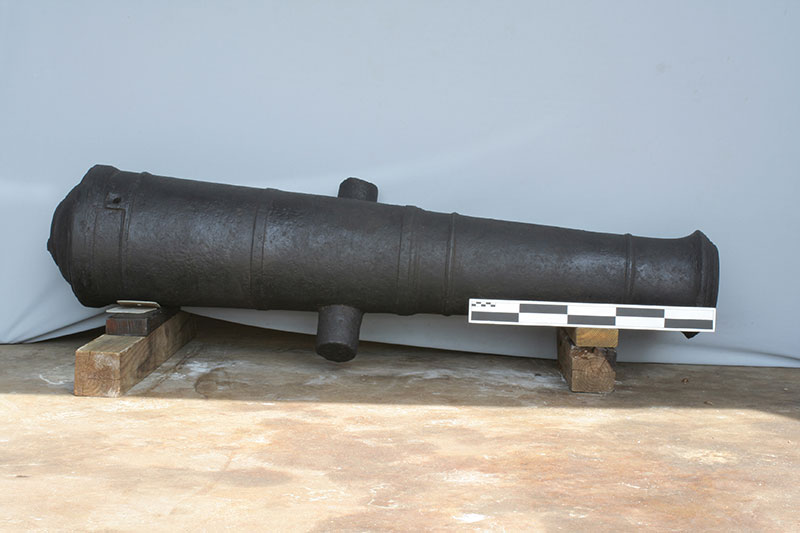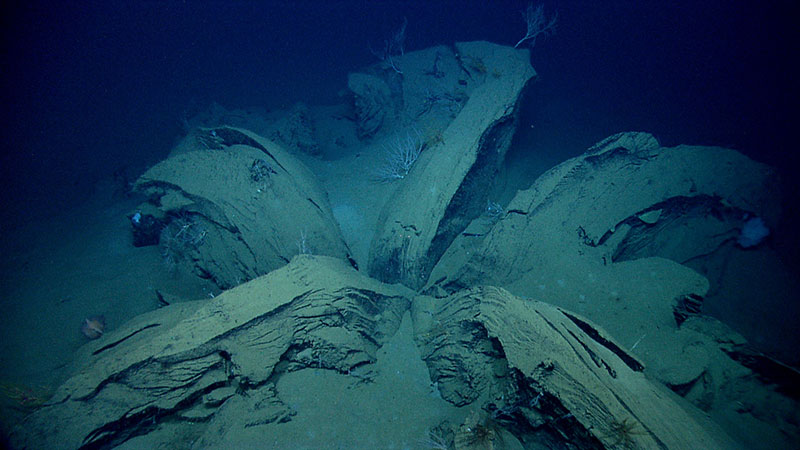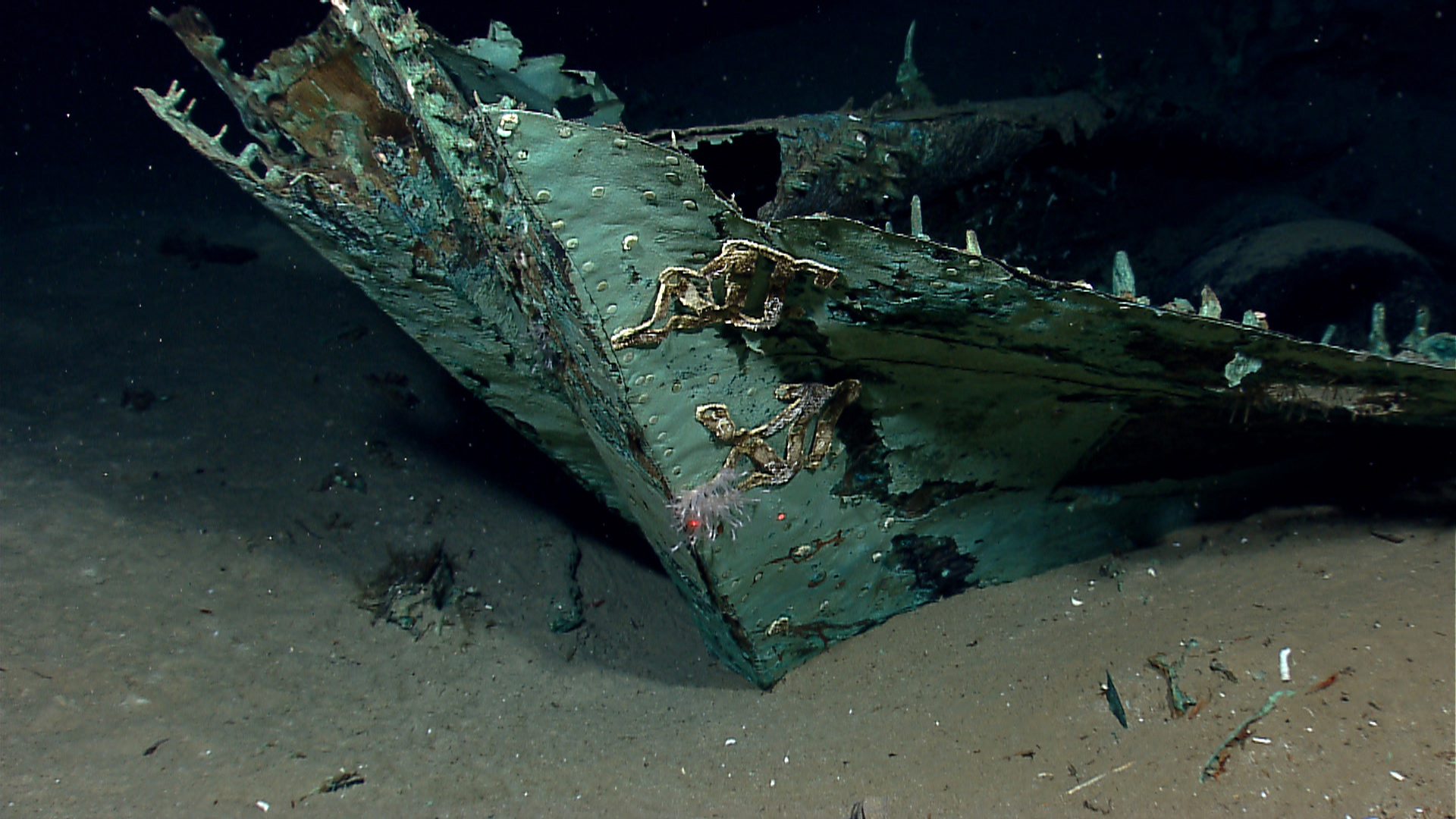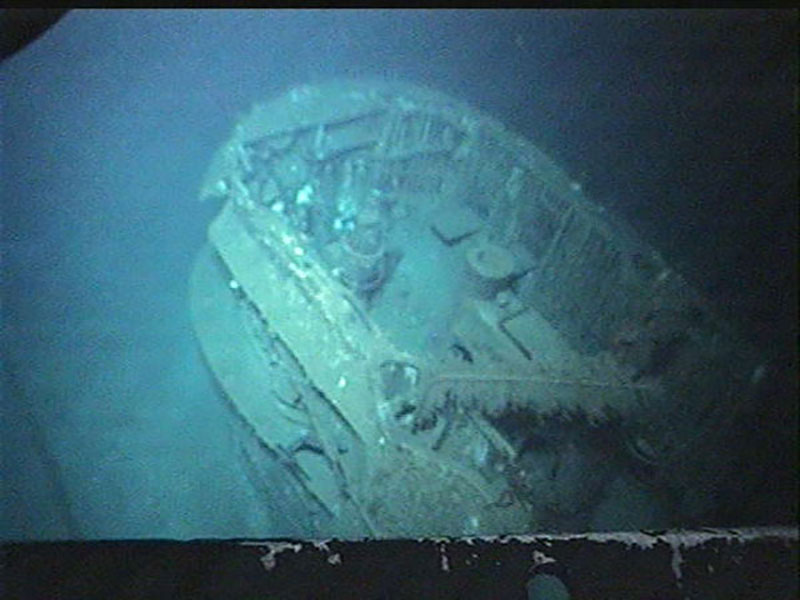Adapted from an essay by Jack B. Irion Bureau of Ocean Energy Management

One means of protecting the future is by understanding the past. Clues to understanding the rich maritime heritage of the Gulf lie entombed in thousands of shipwrecks resting on the ocean floor throughout the Gulf. Shipwrecks are like time capsules preserving a single moment in time. From them, we can learn what life was like for people making their living from the sea hundreds of years ago.
One of the fortunate by-products of intense exploration for oil and gas resources in the Gulf is that many areas of the seafloor are imaged using remote sensing instruments like sidescan sonar. Sonar paints a picture of the seafloor using reflected sound waves. Sonar pictures can sometimes be deceiving since using sonar is a bit like trying to figure out what something is by only looking at the shadow it casts. The only way to know for sure is to look at it with you own eyes or through the lens of a camera. Sonar targets are reported to the Bureau of Ocean Energy Management (BOEM), the federal agency charged with overseeing the oil industry and with protecting the Gulf’s natural and cultural resources.
Sometimes something on the sonar can look for all the world like a shipwreck, but turns out to be a natural rock outcrop. During the 2014 Okeanos Explorer expedition in the Gulf, we went to a target that we speculated could be a shipwreck, but proved instead to be a natural extrusion of tar shaped like a lily with petals 30 feet across! Other times something that looks like a pile of junk could actually be a 300-year old shipwreck!

We estimate that over 4,000 shipwrecks rest on the floor of the Gulf of Mexico from its nearshore shallows to its deepest abyss. Over 600 shipwrecks and possible shipwrecks have been discovered in the northern Gulf of Mexico, mostly through oil industry sonar surveys in water depths up to 2,316 meters (9,800 feet). Thirty-three of these ships have been confirmed visually as historic vessels, either by divers or by ROVs such as those on NOAA Ship Okeanos Explorer.

Previous discoveries include several late 19th- to early 20th-century wooden sailing vessels, one of which is thought to be a War of 1812 privateer. Okeanos Explorer added to that list in 2012 with the discovery of an armed sailing ship from the 1820s that researchers believe may have been a privateer in the employ of one of the Latin American nations seeking their independence from Spain or it may have served as an armed escort. Coming on the heels of that discovery was the investigation in 2014 of two more ships from the same time period that were less than five miles away. The three ships may have been sailing together when they were sunk in the same storm.
There are also several ships sunk in deep water off the mouth of the Mississippi River by German U-boats during World War II, as well as the only German U-boat sunk in the Northern Gulf by Allied forces, the U-166. Many of these wrecks were not previously known to exist in these areas from historic records.

Recent research on historic shipping routes suggests the historic Spanish trade route leaving from Veracruz, Mexico, for Havana, Cuba, crossed some of the deepest parts of the Gulf of Mexico over 100 miles offshore, which therefore increases the probability that a historic shipwreck could be located in this area. One early Spanish shipwreck is believed to have been discovered in water over a mile deep pending further investigation.
Archaeologists are a bit like crime scene investigators trying to recreate what happened from what remains. When the crime scene is a shipwreck in water so deep sunlight never reaches it, and the event may have happened over 100 years ago, the case is really, really cold!

